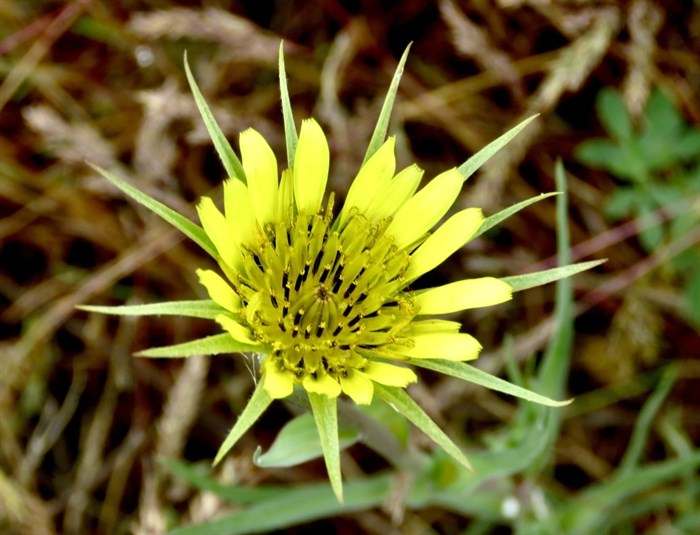
Yellow salsify grows in the grasslands in the Southern Okanagan in spring.
Image Credit: SUBMITTED/ Jodi Forster
May 21, 2025 - 4:00 AM
There are so many kinds of wildflowers to find and identify while out exploring the grasslands in the Okanagan and Kamloops, and the following are just a few common ones you can keep an eye out for.
While some of the flowers are native species, others are invasive plants introduced from different parts of the world that invade and overtake native species.
Yellow salsify is also known by names that include goat’s beard, yellow goat’s beard and common salsify. The dandelion-like flower heads have long narrow leaf like structures extending beyond the flowers.
Yellow salsify is native to Eurasia and northern Africa and can be found on disturbed sites, grasslands, shrublands and coniferous forests in the southern Kootenay, Thompson-Nicola and Okanagan regions of the province, according to Okanagan Invasive Species Online.
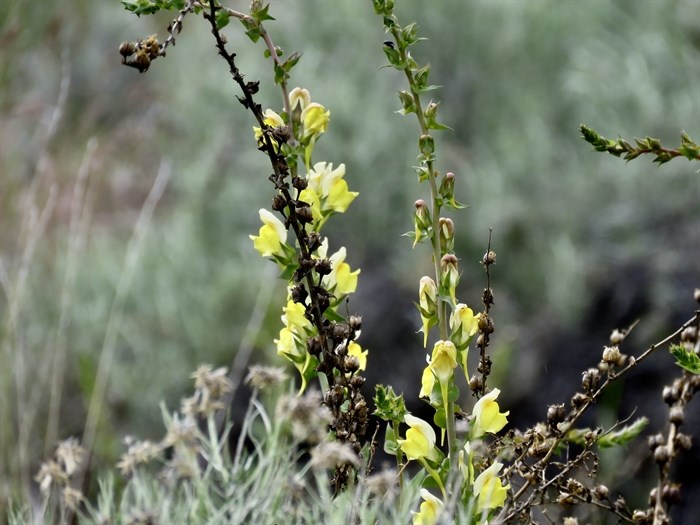
Balkan toadflax is a common invasive plant in the province, found most frequently in the Southern Interior.
Image Credit: SUBMITTED/ Jodi Forster
Balkan toadflax is also known as dalmatian toadflax or broad-leaved toadflax and is native to the Mediterranean regions of Europe and western Asia.
An escaped ornamental, the invasive is mostly found in the Southern Interior on sandy soils along roadsides and railways, and in pastures and rangelands where it invades native plant communities, according to the Regional District of the Okanagan-Similkameen.
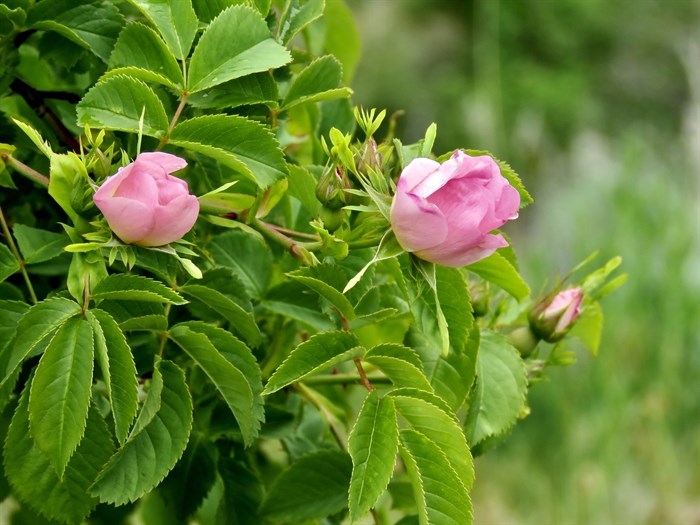
This wild rose grows in the South Okanagan.
Image Credit: SUBMITTED/ Jodi Forster
The wild rose has numerous other names including prickly wild rose and bristly rose and is a native species found growing throughout the country with telltale fragrant pink flowers, red rose hips growing on its stems and thorns of all sizes.
The wild rose is beneficial for bees and butterflies, while the rosehips can be used to make jelly and tea, according to Phoenix Perennials.
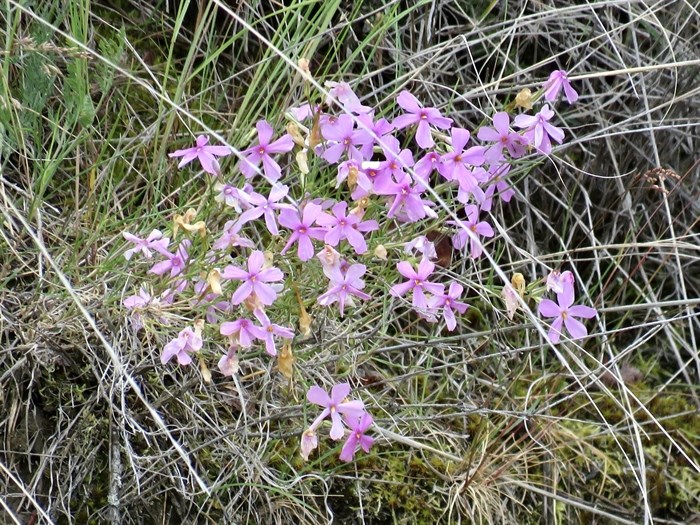
This longleaf phlox was spotted in the South Okanagan grasslands.
Image Credit: SUBMITTED/ Jodi Forster
Another native plant is longleaf phlox that has sweet-scented clusters of purple, pink or white flowers on sturdy, slender stalks.
Found on dry, open places in the western states and southern BC, all parts of the long-leaved phlox plant including the roots was traditionally used as medicine by several native tribes to sooth colds, body aches and stomach aches, and even as an eyewash, according to Montana Plant Life.
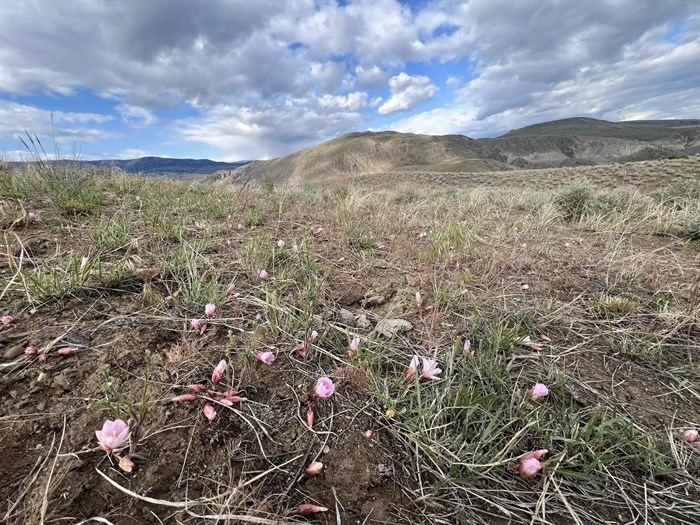
Bitterroot is pictured growing in the Kamloops grasslands.
Image Credit: SUBMITTED/ Susan Schalles
Bitterroot is a native, low-growing alpine plant that is also called desert rose. The flowers are star-shaped and can be white, pink or lavender.
READ MORE: South Okanagan foresters, First Nation seek more sustainable silviculture practises
The hardy, drought-tolerant plants are found in spring and summer in dry grassland, open shrublands and forests, and in dry, rocky or gravelly soils from south central and eastern BC south to Arizona and California, according to Phoenix Perennials.
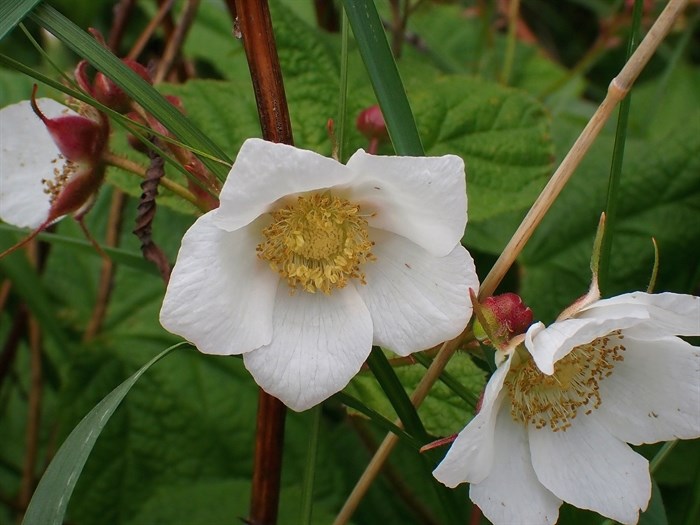
Thimbleberry is a flowering shrub and these flowers were photographed in the Okanagan.
Image Credit: SUBMITTED/ Loeki Vanderwal
Also known as redcap, thimbleberry is a native shrub growing in most parts of the province that produces large white flowers with yellow centres every spring. The flowers attract native bees, and butterflies, and later in the year the plant's edible berries will ripen red and become food for birds and wildlife.
Thimbleberry is found along roadsides, railroad tracks, forest clearings and forest edges, and in clear cuts and forests burned by fire, according to Phoenix Perennials.
If you have awesome photos of flora found on your neighbouring hillsides, you can send them to news@infonews.ca.
To contact a reporter for this story, email Shannon Ainslie or call 250-819-6089 or email the editor. You can also submit photos, videos or news tips to the newsroom and be entered to win a monthly prize draw.
We welcome your comments and opinions on our stories but play nice. We won't censor or delete comments unless they contain off-topic statements or links, unnecessary vulgarity, false facts, spam or obviously fake profiles. If you have any concerns about what you see in comments, email the editor in the link above. SUBSCRIBE to our awesome newsletter here.
News from © iNFOnews, 2025